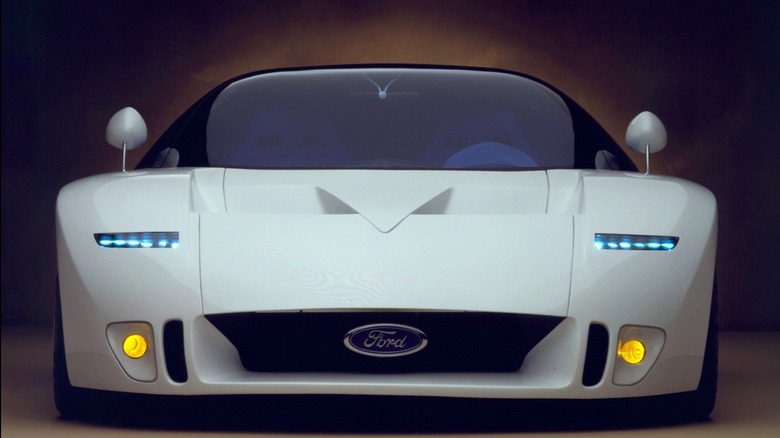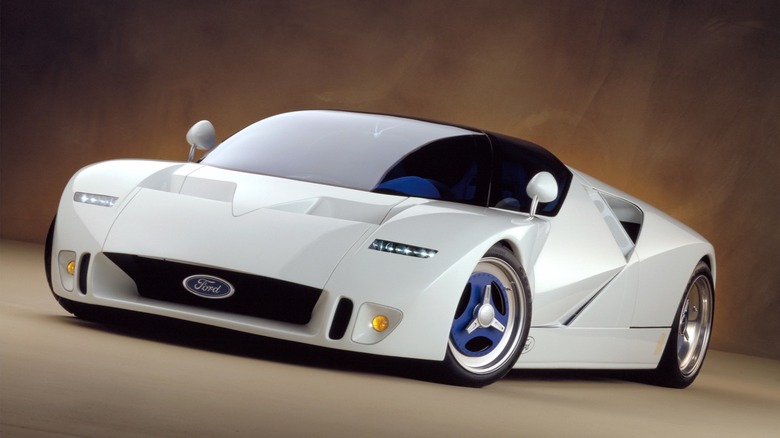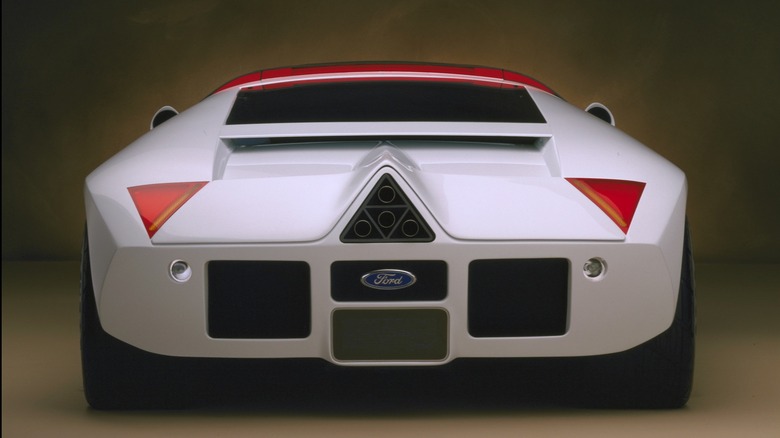All About The Ford GT90 Concept Coupe
Ford isn't exactly a company known for ostentatiousness and speed. They have had a few winners, though. From the 1964 GT40 to the 2005 GT, Ford has shown the world that they can take it to the Europeans on the racetrack and the streets. Between those two models was an often forgotten middle child that was more attention-grabbing than both of them combined, the Ford GT90 Concept Coupe.
In the early 90s, American car manufacturers were still recovering from the 'malaise era' caused by the 1973 oil crisis which made cars produced stateside slow, ugly, and boring. While the times had changed, the design philosophy and mentality of many American car manufacturers were still stuck in that era, including Ford.
That didn't sit right with Ford's then Vice President of Design, Jack Telnack, who decided that Ford needed a dose of theatrics to get the passion flowing again. So, he enlisted Tom Scott and a team of top automotive designers to pen the most ludicrous mid-engined sports car that they could, based loosely on Ford's 1966 Le Mans-winning car, the legendary GT40.
Built on the chassis of a chopped Jaguar XJ220, skinned in an angular carbon fiber body, and featuring a Frankenstein quad-turbo V12 engine, the Ford GT90 Concept Coupe was the centerpiece of the 1995 North American International Auto Show in Detroit. Despite remaining a one-off concept car, the GT90 helped Ford repair their reputation with car enthusiasts around the world.
It was expected to be the fastest car in the world in 1995
While the GT90's design got eyes on the car, its specs are what kept the enthusiasts interested. The GT90 spec sheet listed never-before-seen numbers from any car in the world in 1995. For one, it was said to produce 720 horsepower— a massive number now, but an unfathomable power figure back then.
Those ponies were delivered from an amalgamation of Ford engines spliced together. Bob Natkin of the Ford Advanced Powertrain Department was tasked with producing a performance engine with no less than 600 horsepower. Nothing in Ford's production catalog could get the job done, so Natkin innovated. He started by cutting two cylinders off of two Modular 4.6-liter 32-valve V8s and welding them together to create a 90-degree V12. Then, as if that wasn't enough, he slapped four Garrett T02 turbos to the mashup.
As a result of the huge power and aerodynamic design, Ford claimed the GT90 was capable of 0-60 in 3.1 seconds and a top speed of 235 mph. With over 100 more horsepower than the McLaren F1, Ford was confident that the GT90 would obliterate the F1's production car speed record of 231 mph, which was set in 1993. However, with the GT90 project being scrapped later on, Ford's speculations were never confirmed. It wouldn't have meant much in the long run, as a later iteration of the McLaren F1 set an even faster record of 240 mph which was documented by Road and Track.
Why was the Ford GT90 never produced?
There are a few reasons why the GT90 never made it to dealer showrooms, with financial complications being the main one. It wasn't possible for Ford to build the GT90, in its prototype state, into a production model. Nearly all of the underpinnings of the GT90, including its monocoque, suspension arrangement, transmission, and other fundamental components were borrowed from the extremely limited Jaguar XJ220. With only 282 of those in existence, it wasn't financially responsible for Ford to purchase the lot just to chop them all up.
Counterintuitively, the reality of the GT90 becoming a true production car got more and more distant as motoring journalists and test drivers praised the car for its handling and performance. Since it would cost Ford a small fortune to develop underpinnings for the car that could rival the XJ220, they began doubling down on the sentiment that it was never developed to be anything more than a design study.
Aston Martin is another reason that the GT90 remained a concept. Ford acquired Aston Martin outright in 1994 after the British marque struggled to stay afloat in the 1980s. Despite a rough start to the merger, things began looking up for Aston with the successful arrival of the DB7 in 1994, one year before the GT90 was unveiled in Detroit. Ford worried that introducing a new, mid-engined supercar would dilute the market for Aston Martin, so the GT90 was canned.
Despite never becoming a production-ready car, many car enthusiasts still consider the GT90 to be one of the coolest concept cars ever made. It also helped build confidence in Ford's later supercar endeavors, with the familiar-looking production Ford GT being unveiled in 2005.


